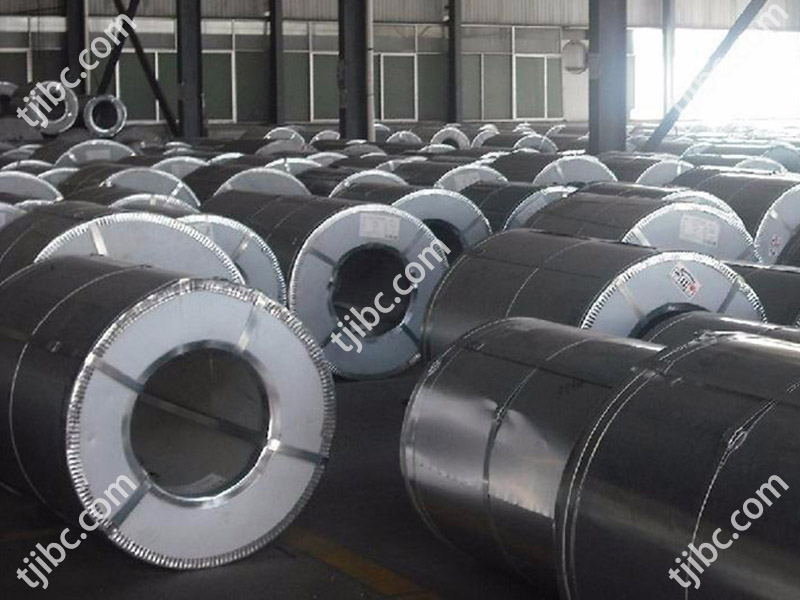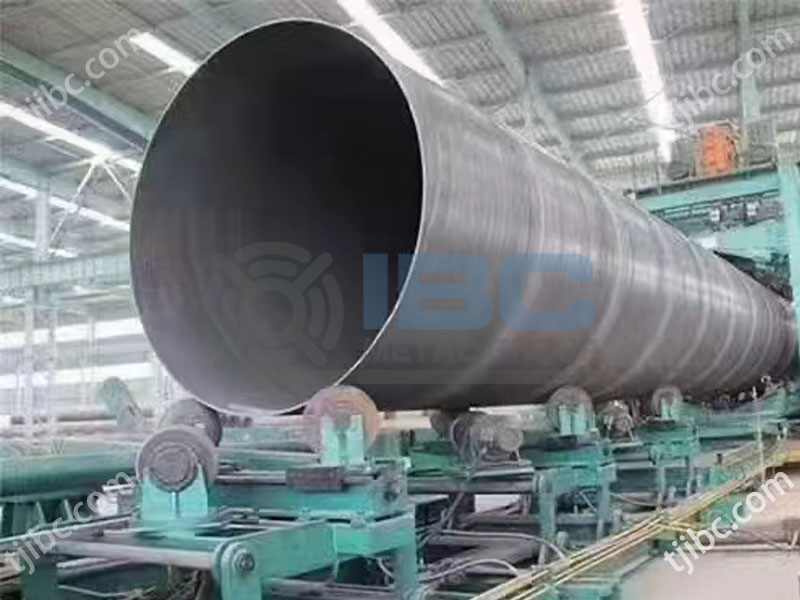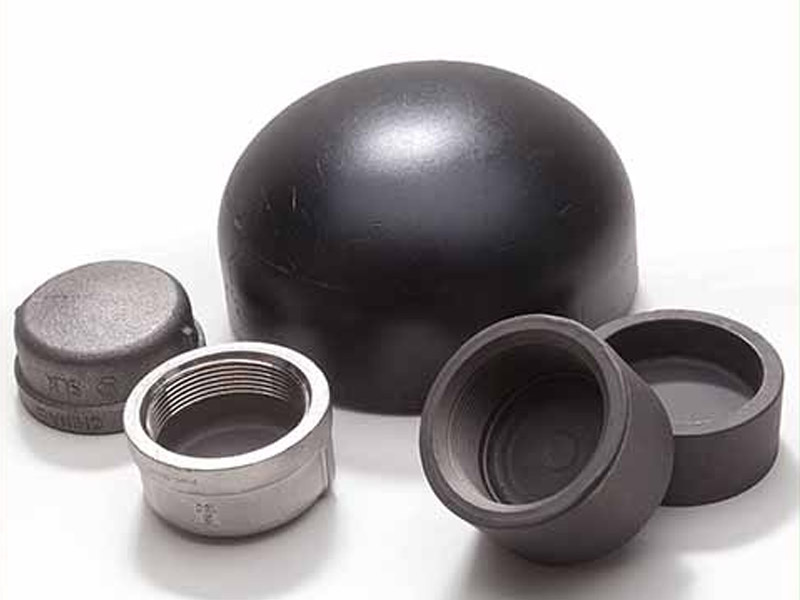IBC (Tianjin) Industrial Co., Ltd produce & export steel products. Such as steel coils and sheets, steel pipes, and pipe fittings, together with other steel accessory. We could also customized the steel products according to your projects needs. Any questions, please let us know.
Once we learn about the steel products, we have to know the method to test the dimensions of them. Gauge is one method. Let’s learn more about it below.
Steel Gauge Thickness Introduction
The gauge steel thickness chart lists the different gauge numbers along with the corresponding thickness in inches and millimeters. This information can be useful when shopping for steel products or when working with a metal fabricator. Steel thickness is measured in inches or millimeters using gauge numbers. The higher the gauge number, the thinner the steel. For example, 12-gauge steel is thicker than 16-gauge steel.
When shopping for steel products, it is important to know the thickness of the material. Steel comes in a variety of thicknesses, ranging from very thin sheet metal to thick plate. The thickness of a piece of steel will affect its price, strength, and weight.
Fabricators use gauge numbers to indicate the thickness of the metal they are working with. For example, a steel product manufacturer might use 14-gauge steel to make brackets for shelves because it can hold the weight of the shelves but is not too thick to be difficult to work with.
Gauge numbers are just one way to measure the thickness of steel. In addition to gauge numbers, there are other systems for measuring Steel Thickness such as decimal inch measurements and millimeters. These other measurement systems can be more accurate than gauge numbers, but they are not as commonly used in industry.
Gauge Steel Thickness Conversion Chart
There are a variety of standard steel gauge thicknesses that are used in different industries. And a variety of metals that can be made into gauges, but steel and aluminum are two of the most popular. Steel is an alloy of iron and carbon, while aluminum is a metal. Both steel and aluminum have a variety of uses. Here is a chart that outlines the most common gauges and their thicknesses:

There are several different gauge systems used today. With specific gauge designations used for specific metal types. For example, in one gauge system, 18 gauge steel measures 0.0478 inches thick, but 18 gauge aluminum is 0.0403 inches thick. Because of the varying thicknesses, a gauge chart should be used to ensure the metal meets the required dimensions.
Standard Gauge Steel Thickness Chart
Different Material have Different Gauge Steel Thicknss Value
Equallent gauge value has different thickness value according to the material. Such as mill steel, aluminum steel, stainless steel, galvanized steel, brass and cooper. Please have a look at the following pictures.
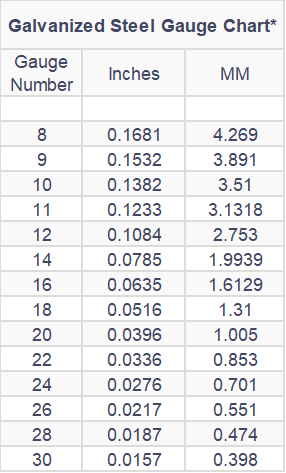
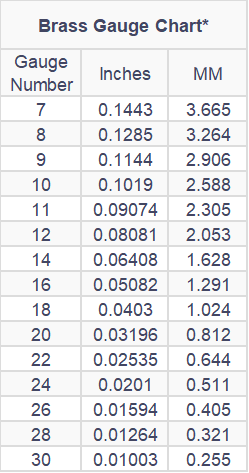
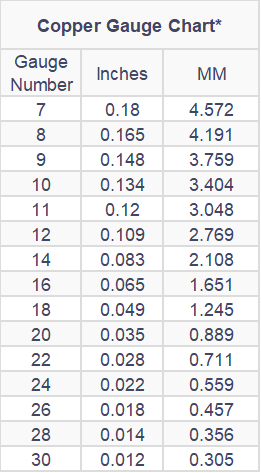
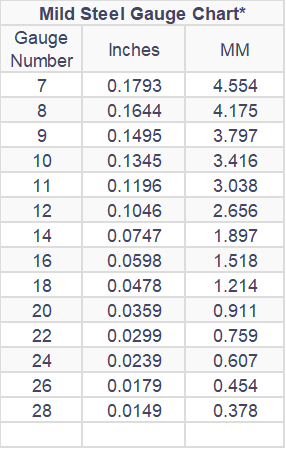


FAQ of Gauge Steel Thickness
What 16 Gauge Thickness In Mm
16 Gauge Standard steel = 1.367; 16 Gauge Galvanized Steel = 1.161; 16 Aluminum =1.29; 16 Gauge Stainless Steel =1.588
What 18 Gauge Thickness In Mm
18 Gauge standard steel = 1.214; 18 Gauge GALVANIZED steel = 1.31;18 Gauge ALUMINUM = 1.024; 18 Gauge Stainless Steel = 1.27
What Are The Gauges Of Sheet Metal?
Different material has different number. The larger the specification number, the thinner the metal. The commonly used steel sheet metal sheet ranges from size 35 to about 3.
What Gauge Are Metal Roofs?
What Gauge Are Metal Roofs?
The metal thickness of the roof ranges from 22 gauge (thickest) to 32 gauge (thinest).
Which 22 Or 24 Gauge thicker?
22 Gauge is thicker. 22 Gauge steel thickness is equal to 0.0299 in, 24 gauge steel is 0.0239 in.
Is 29 Gauge Metal Roof Good?
The metal roof of 29 gauge is relatively thin. If you live in an area with strong winds and bad weather, we recommend using a thicker 22 gauge metal roof.
Which Is Thicker? 20 Or 30 Gauge?
20 gauge steel thickness equal 0.912mm; But 30 gauge thickness is 0.305. So the answer is 20 gauge is thicker.
What Gauge Metal is Thicker 14 Or 16?
No matter what material it is. The larger of the number, the thiner of the thickness. So, the 14 gauge is thicker, Let’s take galvanized steel as an example: 14gauge = 1.993mm , 16guge = 1.161.
Conclusion
We hope you found this gauge steel thickness chart useful. As you can see, there is a lot of variation in thickness for different types of steel. This is why it’s so important to choose the right type of steel for your project. If you’re not sure which type of steel to use, feel free to contact us and we’ll be happy to help you out.
Get In Touch With Us

